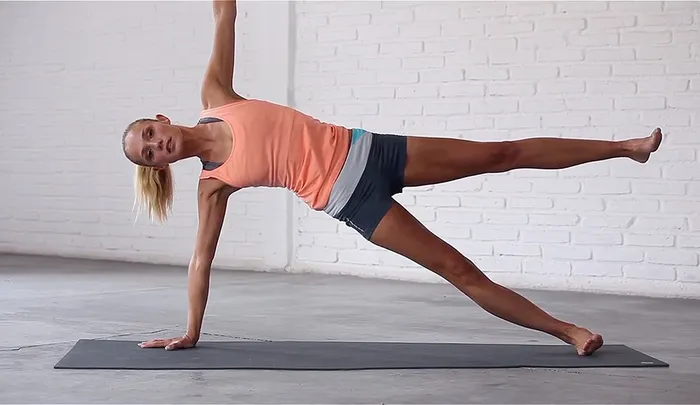Scoliosis is a prevalent condition that affects nearly 7.5 million people in the United States. It’s characterized by a side-to-side curve rather than an up-and-down growth of the spinal column. In most cases, this curve creates an asymmetrical posture that can be both painful and disabling.
Historically, diseases like polio and tuberculosis contributed to scoliosis, but advancements in medical treatments have significantly reduced their influence. In today’s world, about 80% of scoliosis cases are classified as “idiopathic,” meaning that they have no known cause.
Despite this lack of information, new research suggests that practicing certain yoga poses make a big difference in correcting this spinal disorder.
What is Scoliosis?
Scoliosis is a disorder that occurs when the spine curves to one side, creating an abnormal posture. Depending on the angle of the curve, the condition can vary in severity, but any curve over 10 degrees is considered to be scoliosis. Medical professionals often use the letters “C” and “S” to describe the curvature of the spine.
Who Gets Scoliosis?
Scoliosis often begins in children between the ages of 10 and 15, affecting both boys and girls equally. However, girls are eight times more likely to experience progression in their spinal curvature, requiring further medical treatments.
Common Treatments for Scoliosis
Typical scoliosis treatments include wearing back braces for the majority of the day, carrying out physical exercises for at least 30 minutes per day, and in some severe cases, undergoing surgical procedures. Unfortunately, the success of these treatments is often inconsistent and underwhelming.
This is where yoga, an ancient physical practice, can offer a non-invasive and effective solution to correcting spinal curvature. In particular, the “Side Plank” pose has shown positive results in treating scoliosis.
Yoga for Idiopathic and Degenerative Scoliosis
Since scoliosis is an asymmetrical condition, researchers from a study published in the Global Advances in Health and Medicine considered the potential benefits of the side plank pose in treating scoliosis. The uniqueness of the side plank pose lies in its ability to strengthen the truncal muscles on the convex side of the scoliotic curve.
25 patients with scoliosis (curvature ranging from 6 to 120 degrees) participated in the study. They were instructed to practice the side plank pose daily, with the convex side down, for 10 to 20 seconds in the first week. Following this, they were instructed to hold the pose for as long as possible once a day.
Researchers used spinal radiographs taken before and after the study (between 3 and 22 months later) to evaluate the results. The patients practiced the side plank for an average of 1.5 minutes daily, six days per week, for an average duration of 6.8 months.
The findings were highly encouraging:
- A significant improvement of 32% in the Cobb angle of the primary scoliotic curve was observed in all patients.
- In 19 compliant patients, the average improvement increased to 40.9%.
- No significant difference was found between improvements in adolescent idiopathic and degenerative subtypes (49.6% and 38.4%, respectively).
These positive results highlight the potential benefits of integrating the yoga side plank pose as a primary non-invasive treatment for scoliosis and preventing its degeneration.
Why Should You Try Yoga for Scoliosis?
Scoliosis can truly impact a person’s quality of life, causing pain, discomfort, and difficulty in performing daily activities. Traditional treatments may not always provide satisfactory results and can often be invasive or require long-term commitment.
Incorporating the side plank pose in your daily routine is a simple, non-invasive, and effective means of addressing this spinal disorder. It is a natural way to strengthen the muscles around your spine, reduce imbalances, prevent the progression of scoliosis, and ultimately improve your overall quality of life.
Just remember to consult with a healthcare professional before beginning any yoga practice, especially if you have a spinal condition like scoliosis. Be gentle with your body and listen to its cues to ensure you’re practicing safely and effectively.



